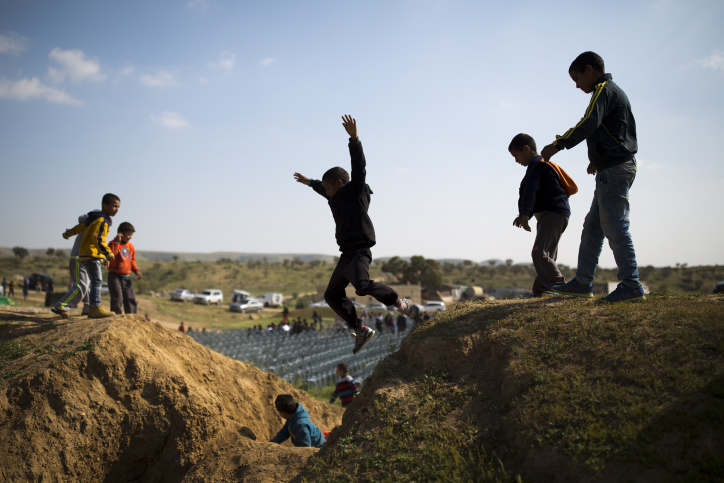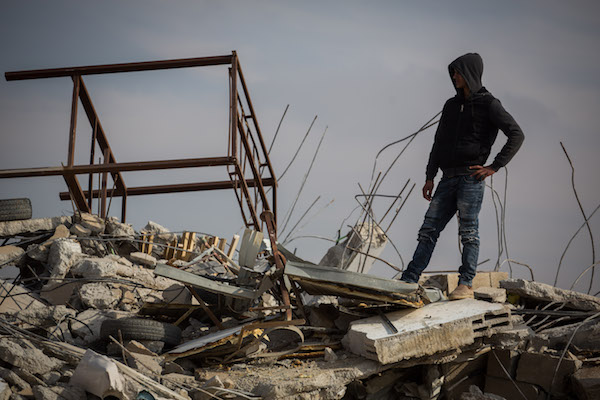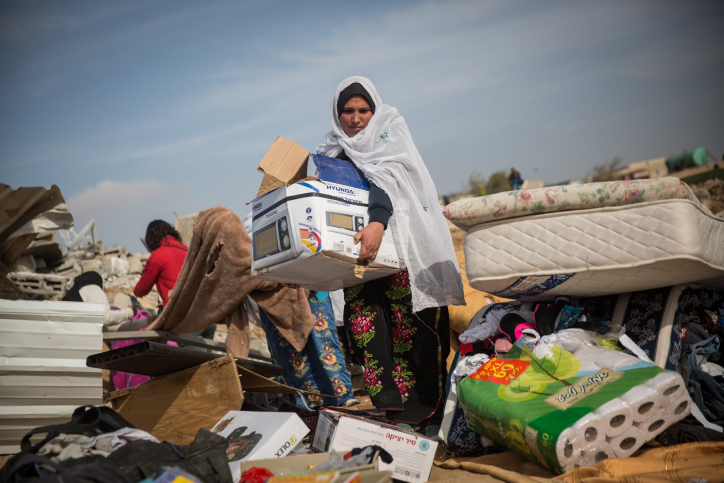Israel is planning to demolish Umm al-Hiran and expel its 1,000 residents at the end of April. After that, it will build a Jewish town on its ruins.
By +972 Magazine Staff

Israeli authorities handed out demolition orders to the entire Bedouin village of Umm al-Hiran on Wednesday, as part of a plan to demolish and expel its residents before replacing it with the Jewish town Hiran. According to the authorities, the evacuation of the village will begin at the end of April.
The village, located in Israel’s Negev Desert, has been under threat of demolition for over two decades, but the plan officially went into motion in 2013 when the Israeli cabinet officially approved its demolition and replacement by “Hiran,” the Jewish town slated to take Umm al-Hiran’s place. Authorities plan to evacuate the residents to the nearby Bedouin township of Hura.
Over the past week, Israeli police have been patrolling the village, although police say preparations for evacuation have yet to commence. According to Haaretz, head of the Bedouin resettlement authority, Yair Maayan, says all the structures un the villages, including one used for prayer, will be demolished. According to the Israeli government, Umm al-Hiran is considered an “unrecognized village,” and thus is vulnerable to repeated home demolitions, and does not enjoy the benefits of electricity, running water, or infrastructure.
Israeli authorities long promised the courts that the displaced Bedouin residents would have an opportunity to live in the new community. However, documents published late last year show that Umm al-Hiran’s residents would be barred from living in Hiran, according to the bylaws of the future town’s cooperative association.
But Umm al-Hiran’s troubles began long before the Netanyahu government decided to go forward with its demolition. Prior to Israel’s founding in 1948, the village residents lived northwest of where the village currently stands. Like many Bedouin, they were expelled during and after the 1948 war, and like most Arab citizens of the nascent Jewish state, they were placed under strict martial law until 1966.

In 1956, the local military governor forcibly relocated the villagers to their current location. Their original land was expropriated by the state in order to establish Kibbutz Shoval.
Despite being established by virtue of an Israeli military order, Israel has never actually recognized Umm al-Hiran, and has therefore never provided it with any basic services or infrastructure such as water, electricity, health services, or schools.
The Israeli government now wants to move the residents of Umm al-Hiran to the nearby urban area of Hura, one of seven townships built to concentrate Bedouin villages in the area.
For several years now, religious Israeli Jews — who form the founding “core” of the cooperative association that is to run the new town of Hiran — have been living in JNF-sponsored caravans, which are connected to water and electricity, in the nearby Yatir forest, as they await the demolition of Umm al-Hiran.
Construction of Hiran began in mid-2016, when the state, along with the Jewish National Fund (JNF), began breaking ground just meters from the Bedouin villagers’ homes.
The Israeli government has made several attempts in recent years to “formalize” land ownership in the Negev, where the vast majority of Israel’s Bedouin population lives. The goal is to “Judaize” the Negev — that is, build more Jewish towns in areas that are populated by non-Jews.

In 2013, the Prawer Plan, which sought to forcibly relocate some 40,000 Bedouin citizens living in dozens of so-called unrecognized villages, was scrapped following immense pushback by Bedouin residents and activists.
In 2015 Israel’s High Court of Justice ruled that the state can change its mind and take back the land it gave to the al-Qi’an family. In place of their current village, Umm el-Hiran, from which they are to be expelled, a new township for religious Jews will be established.
For the past few years, Jewish Hiran’s future residents have been waiting for their new homes at an encampment in the adjacent forest of Yatir.
“The government has no problem with Jewish citizens living on this property – so why should they have a problem with us?” Raed Abu al-Qi’an, a resident and activist from the village, told +972 in 2015. “They allow rural communities to be built for Jews across the Negev – why not us?”
“We have always said, and continue to say, that we have no objections to Jewish families living here or nearby us – but not in place of us. That is racism and injustice,” he added.
